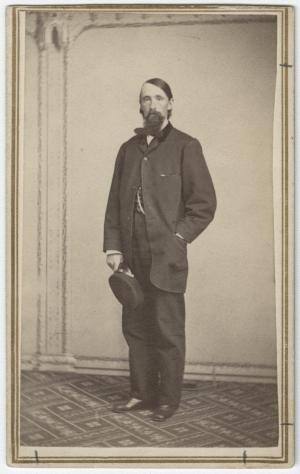 “Their advance upon the sloping prairie in the bright sunlight was a very fine spectacle, and to such inexperienced soldiers as we all were, intensely exciting.”
“Their advance upon the sloping prairie in the bright sunlight was a very fine spectacle, and to such inexperienced soldiers as we all were, intensely exciting.”
Charles Flandreau
On the afternoon of August 19, 1862, New Ulm came under siege by a relatively small group of Dakota warriors. This skirmish lasted several hours and left five settlers dead. The following day the people of New Ulm elected Judge Charles Flandrau, a prominent citizen from St. Peter, as their military commander. Over the next few days more than 1,000 refugees ballooned New Ulm’s population to 2,000 people, while only 300 were equipped to fight.
The second battle of New Ulm took place on August 23. This time, however, more than 600 Dakota soldiers fought, under the guidance of Chiefs Waƞbdiṭanka, Wabaṡa, and Makato. This was the largest battle over a US town since 1776. After holding off the attack, Charles Flandrau led the evacuation of New Ulm on August 25, leaving much of the city in ashes.